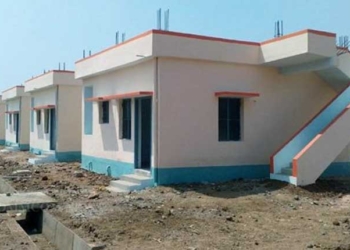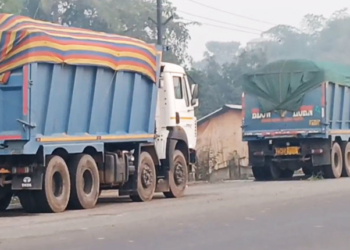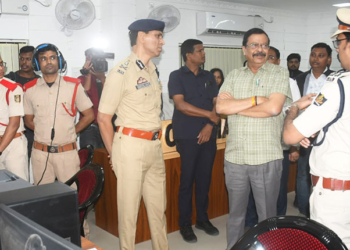Puri: The revered ritual of Snana Purnima was celebrated with deep spiritual fervour at the Shree Jagannath Temple in Puri today, marking the ceremonial bathing of the holy siblings — Lord Jagannath, Lord Balabhadra, Devi Subhadra, and Lord Sudarshan — on the Snana Mandap.
Thousands of devotees gathered in and around the temple premises to witness the sacred occasion steeped in tradition and symbolism.
In the early hours of the morning, following rituals such as Mangal Alati, Abakash Niti, and Bimba Snana, the deities were ceremonially brought out of the sanctum sanctorum, the Ratna Bedi, in a traditional Pahandi procession. They were then seated on the Snana Mandap, the special bathing altar constructed for this annual observance.
As part of the ritual, 108 pots of sacred water, each infused with sandalwood paste (chandan), camphor (karpur), saffron (keshar), herbal oils (chua), Terminalia chebula (harida), aromatic flowers, aguru, khus-khus grass (benachera), and other fragrant herbs and natural perfumes, were used to bathe the deities.
Each idol was bathed with a distinct number of water pots — Lord Jagannath with 35, Lord Balabhadra with 33, Devi Subhadra with 22, and Lord Sudarshan with 18 — all carried out with meticulous devotion by temple servitors.
Following the sacred bath, Gajapati Maharaja Dibyasingha Deb arrived at the Snana Mandap in a palanquin and performed the Chhera Pahanra ritual, followed by Alati as per tradition.
Subsequently, the deities were adorned in the Gajanana Besha (elephant attire) also known as the Hati Besha (elephant attire), in which they resemble Lord Ganesha. This symbolic attire is believed to represent their divine strength and benevolence, and is considered one of the most visually striking adornments in the Jagannath temple calendar.
Traditionally, it is believed that the deities fall ill after the elaborate bathing ritual. As a result, they are taken into quarantine for a 15-day period of convalescence inside the Anasara Ghara, a special chamber within the temple complex.
During this time, known as the Anasara period, the deities are kept away from public view. The word Anasara itself means “improper time,” reflecting the belief that this phase is unfit for worship. During this period, only the Daita servitors, a specific group of hereditary temple priests, are allowed to perform special healing rituals to restore the deities’ health.
The observance of Snana Purnima marks a significant moment in the lead-up to the annual Rath Yatra, and serves as a spiritual milestone that brings devotees closer to the divine in both ritual and reflection.
















